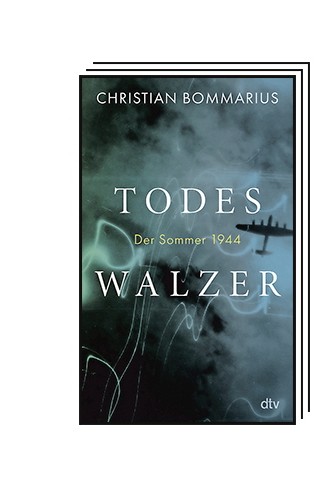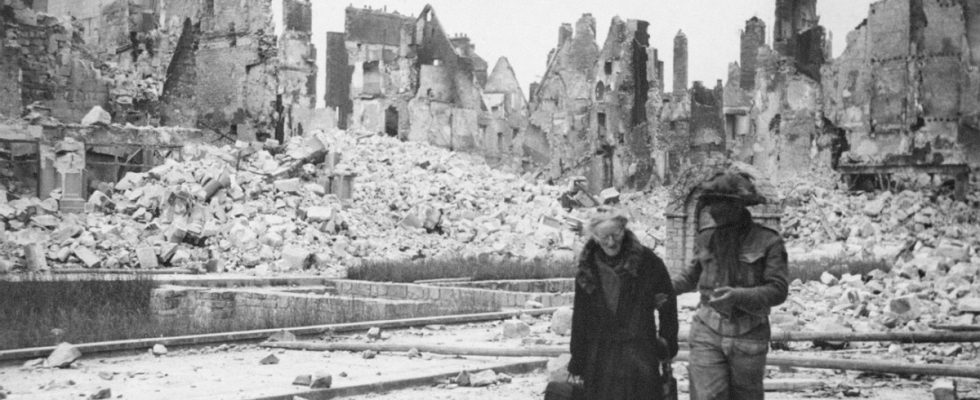By the early summer of 1944, the war had long since become unwinnable for the Germans. But with the landing of the Allies on the coast of Normandy on June 6th and the Red Army’s “Operation Bagration” on the Eastern Front a few weeks later, it gained considerable momentum again. Finally, as a result of the failed assassination attempt on Adolf Hitler on July 20th, it escalates over the next few months to a sustained crescendo of terror and destruction – an unrestricted murder and death that has no equal in history.
In an impressive, readable book, the journalist Christian Bommarius describes this infernal last summer of the Second World War in Europe. It extends to the late days of August, when the German occupiers capitulated in Paris and a little later the Royal Air Force set fire to the East Prussian capital Königsberg with their bombs. Historic Königsberg is crumbling to ashes. Four hundred kilometers further south, in Warsaw, the Polish Armia Krajowa (AK), the “home army”, has been fighting heroically but in vain against the SS and Wehrmacht since August 1st, killing around 200,000 people – AK fighters as well as children. Women and old people – and destroy Warsaw comprehensively and meticulously.
Unimaginable numbers of people killed
In the nine and a half months from the attack on the dictator until May 8, 1945, more than four million Germans – soldiers and civilians – will die, up from almost three million since the start of the war. And that’s just the Germans. Bommarius lists that 1.5 million Red Army soldiers will die by the beginning of May 1945, more than 100,000 American and British soldiers and hundreds of thousands of prisoners in the concentration camps that the Germans will murder by then. At this point, they had already killed almost all of the European Jews, far to the east, in Poland, Belarus and the Ukraine – gassed in extermination camps like Auschwitz, Majdanek or Maly Trostinez, shot in villages, in fields and in forests. An unimaginable number of people killed. Added to this are the soldiers and civilians of other nations; In total, 60 to 70 million people died in the Second World War, mostly civilians, including 27 million citizens of the Soviet Union and six million Poles.
The German murder machine continued to work until the end: prisoners of the Auschwitz concentration camp and extermination camp in May 1944.
(Photo: AFP)
A blood-soaked, horrific tableau, which Christian Bommarius narrows down to the summer of 1944 because that was almost 80 years ago. However, on closer inspection, the concentration on the three or four summer months of 1944 turns out to be an illusion: even the confident and knowledgeable narrator was able to do so without foreshadowing or going back to the spring and winter of 1944 as well as to the years 1943 and 1945 and without several digressions Bommarius cannot master his topic. It is impossible to report on a war, especially this one, without the history and the historical-political background. However, when it comes to these connections, Bommarius is a fan of extreme reduction.
There is little about strategy, politics and battles
So it’s not about the course of the battle or about the politics and strategy of the Allies, who, after the landing in France and after the destruction of Army Group Center on the Eastern Front at the end of June, clamped down on Germany from two sides. Bommarius is a skillful arranger of voices, experiences and events. In this way he succeeds in cutting a path through the almost impenetrable jungle of literature about the Second World War, National Socialism and the Shoah. Eyewitness reports, diary entries and biographical material make up his book. Christian Bommarius did not invent this type of assembly; There are now a few books that do this or something similar, including those on the Second World War.

In retreat: A German officer gives orders to soldiers during the defensive battle in the central sector of the Eastern Front in the summer of 1944.
(Photo: Scherl/Süddeutsche Zeitung Photo)
But like few others, Bommarius has mastered the art of linking the perspectives of very different people on the events of a few days and weeks into a dense fabric in which the readers can, so to speak, wrap themselves – amazed, moved, horrified, shocked, angry, depending on the composition … In addition to those who were persecuted or excluded like the Jew Margot Friedländer and the German-Cameroonian Theodor Michael, men like those German generals whose pitiless, crude chatter the British overheard in the Trent Park prison camp also have their say; or Hitler’s compliant favorite director Leni Riefenstahl. Bommarius brings together many other protagonists who are no longer well known, but each illustrious in their own way, such as the courageous Berlin resistance fighter Ruth Andreas-Friedrich and the English writer Patrick Leigh Fermor, who kidnapped a German general on Crete in 1944. Or the once legendary publicist Erich Kuby, who was a private in France in 1944. Joel Berger, a Jewish boy from Budapest who later became the state rabbi of Württemberg. The Hessian judicial employee Friedrich Kellner, who, first openly and then in his diaries, had a 12-year angry argument with the Nazis. The above-mentioned digressions apply to him and the German captain Wilm Hosenfeld, who helped persecuted Jews in destroyed Warsaw, as well as Mordechai Papirblat, who survived Auschwitz and a “death march” in February 1945.

Christian Bommarius: Waltz of Death. The summer of 1944. dtv Munich 2024. 320 pages. 26 euros. E-book: 22 euros.
(Photo: dtv)
In a follow-up note, written before the large demonstrations against the AfD and its plans these days, Christian Bommarius draws the line from the murderous summer of 1944 back to the failure of the Weimar Republic in the face of its enemies. What a short time ago might have been seen as a compulsory exercise for a committed author is now read with different eyes. The last months of the war and the path there are not as far away as it seems.

